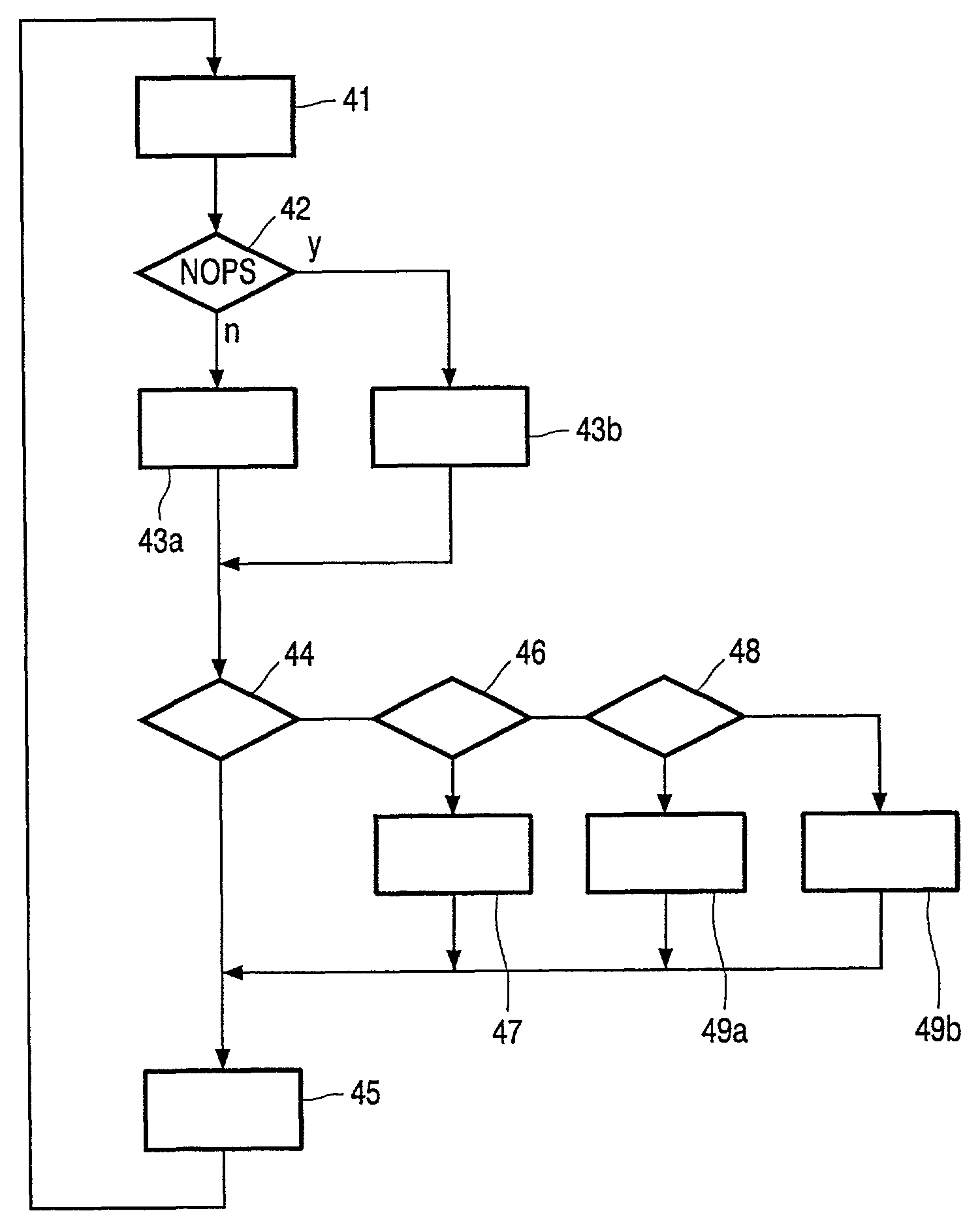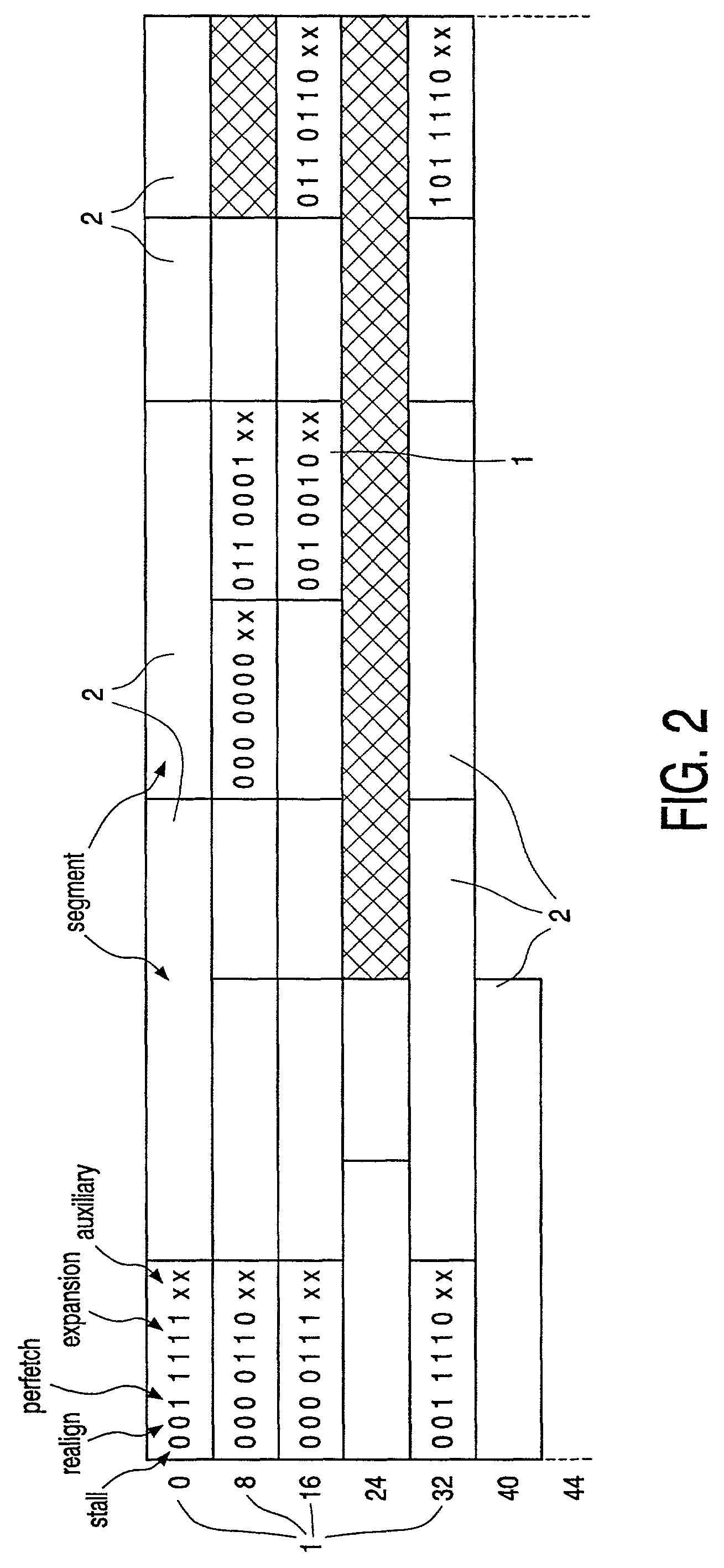Variable length VLIW instruction with instruction fetch control bits for prefetching, stalling, or realigning in order to handle padding bits and instructions that cross memory line boundaries
a technology of instruction fetching and control bits, applied in the field of instruction fetching in the computer system, can solve the problems of high code size penalty, complex instruction fetch hardware required to handle variable length instruction formats, loss of execution cycles, etc., and achieve the effect of maintaining processing performance at a relatively high level
- Summary
- Abstract
- Description
- Claims
- Application Information
AI Technical Summary
Benefits of technology
Problems solved by technology
Method used
Image
Examples
Embodiment Construction
[0030]FIG. 3 shows a computer system. Only parts of the system used to explain the invention are shown. The system contains a memory 30, an instruction issue unit 32 and an instruction-processing unit 34. The instruction issue unit 32 contains a header selection unit 320, instruction selection units 322a-c, a selection control unit 324, an addressing unit 326, a previous line register 328 and a NOP source 329. By way of example, three instruction selection units 322a-c are shown, but more or fewer may be used. The addressing unit 326 has an address output coupled to memory 30, which as a data output coupled to the instruction selection units 322a-c. The NOP source 329 is also coupled to the instruction selection units 322a-c. The instruction selection units 322a-c each have an output coupled to a respective one of a number of issue slot inputs 340a-c of the instruction processing unit 34.
[0031]The data output of memory 30 is also coupled to the header selection unit 320 and an input...
PUM
 Login to View More
Login to View More Abstract
Description
Claims
Application Information
 Login to View More
Login to View More - R&D
- Intellectual Property
- Life Sciences
- Materials
- Tech Scout
- Unparalleled Data Quality
- Higher Quality Content
- 60% Fewer Hallucinations
Browse by: Latest US Patents, China's latest patents, Technical Efficacy Thesaurus, Application Domain, Technology Topic, Popular Technical Reports.
© 2025 PatSnap. All rights reserved.Legal|Privacy policy|Modern Slavery Act Transparency Statement|Sitemap|About US| Contact US: help@patsnap.com



